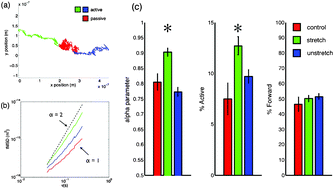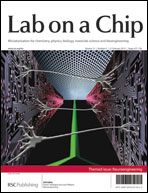Measuring nonequilibrium vesicle dynamics in neurons under tension
Abstract
Vesicle transport in neurons is a highly complex nonequilibrium process. Their subcellular environment is undergoing constant fluctuations from thermal energy and molecular motors. Vesicle transport is an interplay between random motion (passive) and directed motion (active) driven by molecular motors along cytoskeletal filaments. It has been shown that growth, guidance, and vesicle dynamics of neurons is affected by mechanical tension. Here we present a method to analyze vesicle transport via a temporal Mean Square Displacement (tMSD) analysis while applying mechanical strain to neurons. The tMSD analysis allows characterization of active and passive vesicle motion as well as many other parameters including: power law scaling, velocity, direction, and flux. Our results suggest: (1) The tMSD analysis is able to capture vesicle motion alternating between passive and active states, and indicates that vesicle motion in Aplysia neurons is primarily passive (exhibiting active motion for ∼8% of the time). (2) Under mechanical stretch (increased neurite tension), active transport of vesicles increases to ∼13%, while vesicle velocity remains unchanged. (3) Upon unstretching (decreased tension), the level of active transport returns to normal but vesicle velocity decreases. These results suggest that vesicle transport in neurons is highly sensitive to mechanical stimulation. Our method allows precise characterization of vesicle dynamics in response to applied mechanical strain.


 Please wait while we load your content...
Please wait while we load your content...